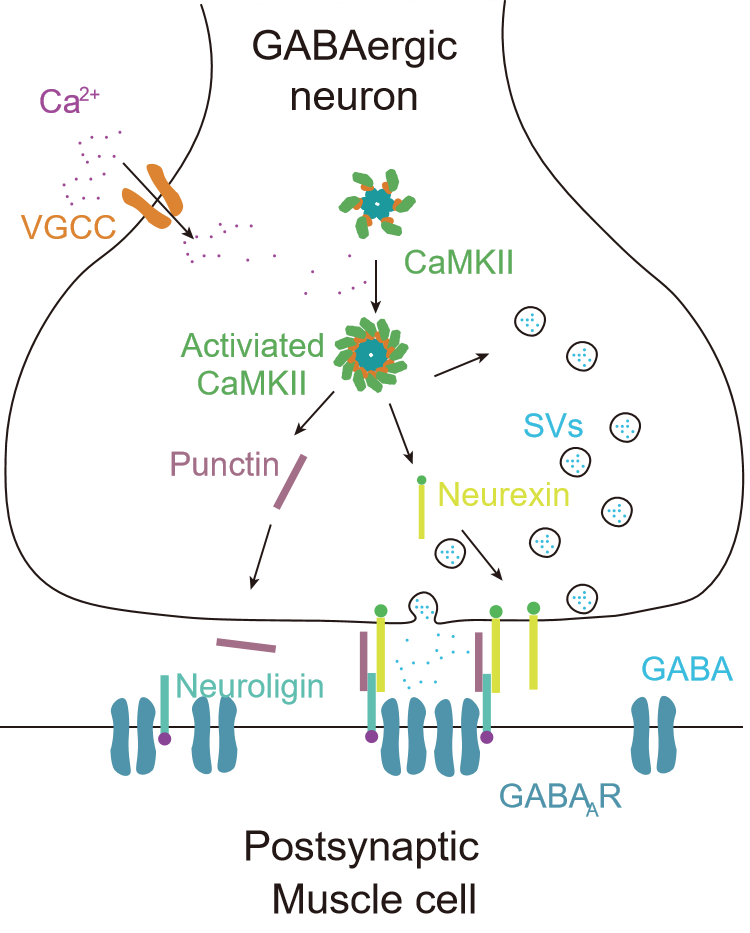Synapse is the contact between neurons where information passes through. According to the types of information, there are excitatory and inhibitory synapses, and the inhibitory synaptic transmission plays a pivotal role in maintaining the excitatory and inhibitory balance. Disturbance of inhibitory synaptic transmission has been reported relevant to many neurodevelopmental and psychiatric disorders.
The nervous system possesses the characteristics of both stability and flexibility that rely on faithful synaptic transmission and inducible synaptic plasticity. When environmental disturbance happens, the presynaptic neuron senses the changes of neural activity, and releases anterograde signals to the postsynaptic neuron to change the synaptic strength and adapt to the environment. However, the mechanism of how presynaptic neurons trigger anterograde signals at the inhibitory synapses remains elusive.
CaMKII (Calcium/Camodulin-dependent protein kinase II) is a key sensor of neural activity-mediated intracellular calcium. Since it was discovered 40 years ago, many scientists have focused on the function of postsynaptic CaMKII, and found that postsynaptic CaMKII regulates receptor trafficking and recruitment and participates in synaptic plasticity. However, increasing studies pointed out that CaMKII is also enriched at presynapse with unknown functions. Recently, researchers led by SLST Assistant Professor Tong Xiajing identified a new function of presynaptic CaMKII which triggers pre- and post- synaptic communications to regulate inhibitory synaptic transmission and plasticity. On March 15, their results were published in a paper entitled “UNC-43/CaMKII-triggered anterograde signals recruit GABAARs to mediate inhibitory synaptic transmission and plasticity at C. elegans NMJs” in the journal Nature Communications.
In this study, Tong’s group showed presynaptic CaMKII can trigger anterograde signal proteins Neurexin and Punctin to recruit GABAA receptors (GABAARs) and modulate inhibitory synaptic transmission at C. elegans neuromuscular junctions. They found that CaMKII promotes presynaptic Punctin secretion and Neurexin surface delivery in order to recruit postsynaptic Neuroligin to stabilize GABAARs. Furthermore, during the excitation of presynaptic neurons by optogenetics, CaMKII can sense the neural activity changes, thereby strengthening the anterograde signals and further boosting the recruitment of GABAARs. These results demonstrated that presynaptic CaMKII is involved in inhibitory synaptic plasticity. It is worth noting that the genes encoding this anterograde signaling pathway (CAMK2A, NRXN, NLGN, etc.) are linked with autism and other psychiatric diseases, and Tong’s study may provide new insights into the pathogenesis of these diseases.

Ph.D. candidate Hao Yue in Tong’s group and postdoc Liu Haowen from the University of Queensland are the co-first authors. Prof. Tong Xiajing is the corresponding author. ShanghaiTech University is the primary affiliation.

